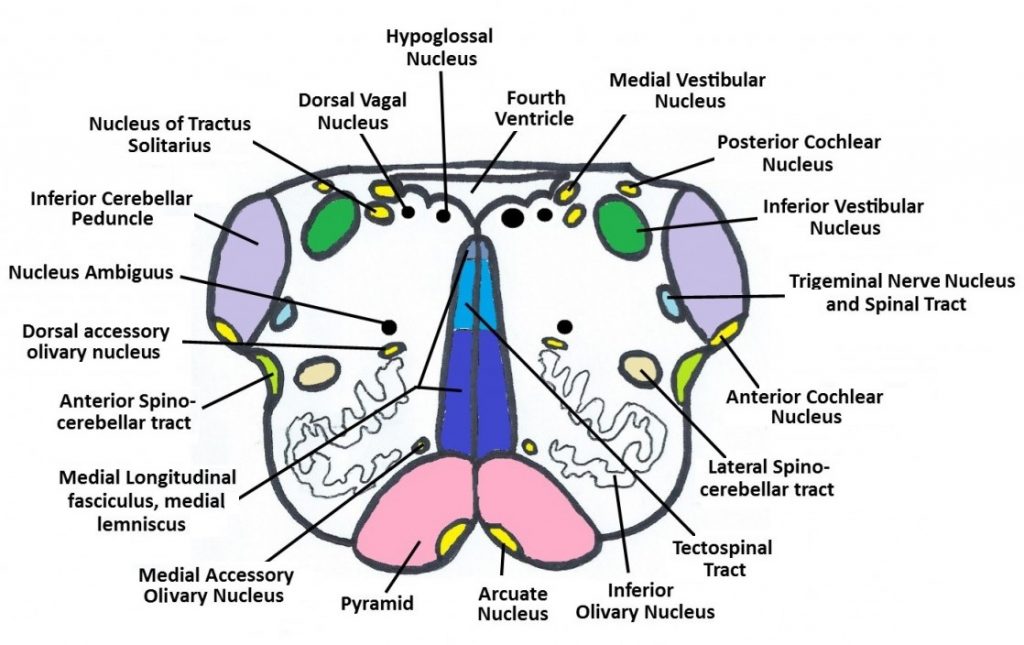Learning objectives
- Learning
- Understand
- Integrate
- Reflect
|
Medulla Anatomy and Function

- The medulla contains a host of nuclei all tied up with fairly primitive functions such as cardiorespiratory, vomiting centres etc. It also contains the reticular activating system.
- Medially to the olive and near the midline is the medial lemniscus that carries dorsal column sensation to the thalamus. Vascular supply is by branches of the vertebral artery including the posterior inferior cerebellar artery. PICA as we know classically irrigates lateral medulla.
- Anteriorly there are median and paramedian perforators from the vertebrals. Lateral medullary syndrome is more commonly due to vertebral occlusion than PICA occlusion of itself.
Medial structures
- Hypoglossal nerve nucleus controls tongue muscles and the nucleus lies near the midline and exists the posterior fossa through the hypoglossal foramina. Each hypoglossal receives bilateral projections from the motor cortex. Unilateral weakness causes the tongue to bend to the weak side. Tongue can be weak and also can be apraxic.
- Medial lemniscus with crossed fibres from the dorsal column (gracile and cuneate nuclei) on the way to the ipsilateral thalamus
- Pyramids lie on either side of the midline on the ventral surface and contain the corticospinal motor tracts which are decussating.
Lateral structures
- Nucleus ambiguus : Receives bilateral cortical innervation from the primary motor cortex. Efferent to IX and X and XI. Concerned with swallowing. Descending nucleus of V: which has its cell bodies within the trigeminal ganglion. Dorsal motor nucleus of X : preganglionic parasympathetic to nerves IX and X. Supplies heart, lungs and abdominal organs.
- Nucleus solitarus : Lies in the medulla and receives input from VII, IX and X. Part of it is called the gustatory nucleus concerned with taste. Fibres pass from here to the venteroposteromedial nucleus of thalamus.
- Laterally to the pyramids is the bulge of the inferior olivary nucleus which sends fibres to the cerebellum
- Vestibular nuclei : four of these lie in floor of the IVth ventricle. Cochlear nuclei : closely associated with vestibular nuclei
- Inferior cerebellar peduncle with dorsal spinocerebellar, olivocerebellar and cuneocerebellar tracts
- Lateral spinothalamic tract (spinal lemniscus)
- Spinal nucleus of V: Fibres concerned with touch, pain and temperature from the face goes to the spinal nucleus of V. Descend from pons down to the medulla.
Vascular Supply
- Posterior inferior cerebellar artery which supplies the lateral medulla as well as the underside of the cerebellum. Occlusion to the PICA or the vertebral itself will cause an ipsilateral Lateral medullary syndrome.
- Anterior spinal artery supplies medial structures and if occluded can cause a medial medullary syndrome. Penetrating branches of the vertebral can also supply structures.

